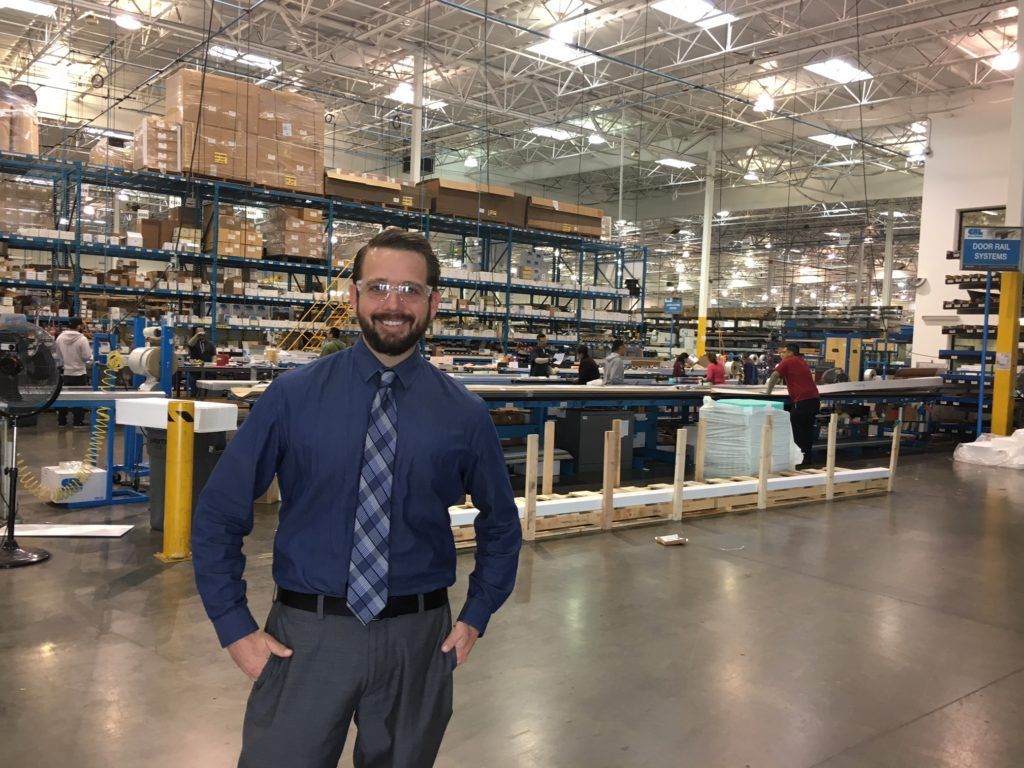[vc_row][vc_column][vc_column_text]C.R. Laurence , or “CRL,” as they’re known to most of the industry, is a leading supplier and manufacturer of products to the glass and glazing industry, and one with whom Giroux Glass has done business ever since our own company was started seventy years ago. There aren’t too many local companies older than ours, but CRL is an exception, at over one hundred years old. Visiting one of their many manufacturing sites was, however, brand new to me. With worldwide locations in forty-five cities and six countries, it was interesting to me that I was getting to see where it all began so long ago, in Vernon, California, not far from our own Downtown Los Angeles location.
, or “CRL,” as they’re known to most of the industry, is a leading supplier and manufacturer of products to the glass and glazing industry, and one with whom Giroux Glass has done business ever since our own company was started seventy years ago. There aren’t too many local companies older than ours, but CRL is an exception, at over one hundred years old. Visiting one of their many manufacturing sites was, however, brand new to me. With worldwide locations in forty-five cities and six countries, it was interesting to me that I was getting to see where it all began so long ago, in Vernon, California, not far from our own Downtown Los Angeles location.
I was invited to attend a training session of CRL’s proprietary estimating software, called “StoreFront Online.” In my quest to learn as much about my “new” industry, (if I can indeed still refer to it that way after over 2 years), I accepted eagerly, hoping to get a glimpse into a day in the life of our talented glazing estimators. I certainly got that and more.
I was impressed with the facility from the moment I entered. At the first site I visited, where the class was being conducted, the CRL building here served the purpose of product distribution to warehouses all over the US and Canada. One large area was allocated for use as a teaching classroom, and is one which many universities would covet. With (ergonomic) seating for about 45 students, there was a computer and monitor at every spot, so that content projected on the screen at the front of the room could be seen up close by every student. It also, in other cases, would allow each student to interact with the program on their own.
 Paul Daniels, senior vice president of sales, started the class with a review of recent Title 24 requirements, explaining their implications and how to meet new standards. I found it encouraging to note that architects are often exceeding the minimum standards required by this California energy code, that many are striving for even greater efficiencies with thermal break systems than those decreed by the code.
Paul Daniels, senior vice president of sales, started the class with a review of recent Title 24 requirements, explaining their implications and how to meet new standards. I found it encouraging to note that architects are often exceeding the minimum standards required by this California energy code, that many are striving for even greater efficiencies with thermal break systems than those decreed by the code.
David Banuelos, architectural sales representative, went on to demonstrate how to use “StoreFront Online.” The program was developed by CRL to facilitate fast and efficient generation of elevations, using CRL hardware, and to quickly generate customized price quotes. It also has safeguards built into it, so that if an error is made in ordering a part that should not be used, or that isn’t compatible with another component, an error message will pop up explaining the error and how to correct it before proceeding. Its goal is to be considered foolproof when designing glass systems, right down to confirming inventory levels of needed components.
After the class, I was lucky to be toured through a nearby manufacturing facility by Andrew Haring, vice president of marketing. A few miles away, we entered through a lobby that also served as a well-supplied showroom, and I saw remarkable systems that actually ship around the world to trade shows. Once past the reception area, I saw what seemed to be miles of gleaming, organized shop interior space, that stretched beyond my vision, at least several football fields in length. And this was just one of many local facilities.
I saw this process in action, a Flow IFB Integrated Flying Bridge Water Jet machine that quickly speeds through cutting aluminum and other metals by using high-pressured water, a garnet abrasive, and a lot of ingenious technology. In this video, you can see how the placement of a new position caught me by surprise, and I jumped back in an automatic reflex at the sudden burst of sound and steam:
[/vc_column_text][vc_video link=”https://youtu.be/ShX_Vk2ydNU” el_width=”70″ align=”center”][vc_row_inner][vc_column_inner width=”1/2″][vc_column_text]Another interesting process is the use of 3D printers to create prototypes for hardware components (shown far right).
There were some older tools and machines still being used as well (like the drill press shown right), but in cases where simple and basic drilling is required, there is no reason to not make use of perfectly-functioning older instruments and tools — they still do the job required and do it well. I witnessed a little bit of old and new, and was definitely fascinated by all of it.[/vc_column_text][/vc_column_inner][vc_column_inner width=”1/2″][vc_single_image image=”297″ img_size=”400×470″ css=”.vc_custom_1487083367728{margin-bottom: 0px !important;border-bottom-width: 0px !important;padding-bottom: 0px !important;}”][/vc_column_inner][/vc_row_inner][vc_single_image image=”298″ img_size=”400×470″ alignment=”center”][vc_column_text]I’d like to return with a group of my coworkers, in case I’m not the only one who has had the chance to see this inspiring plant. In the meantime, I’d like to extend a heartfelt thank-you to CRL for hosting my visit, and also to Andrew for taking the time for this impromptu tour. I appreciate so much more the skill that goes into the production of these systems, now that I see how they’re made. I highly recommend it!
 [/vc_column_text][/vc_column][/vc_row]
[/vc_column_text][/vc_column][/vc_row]